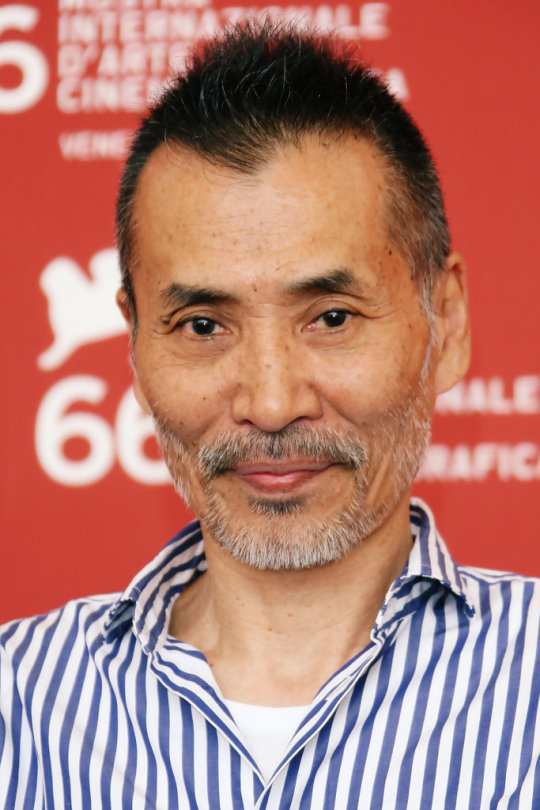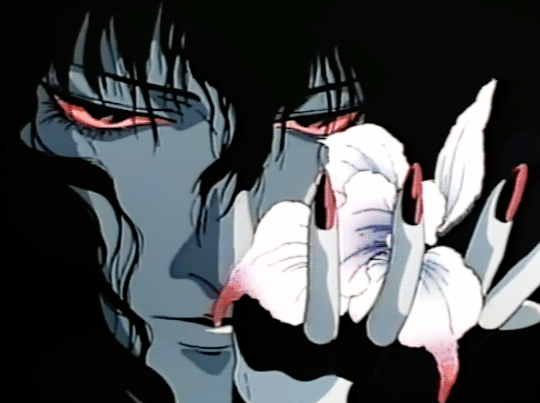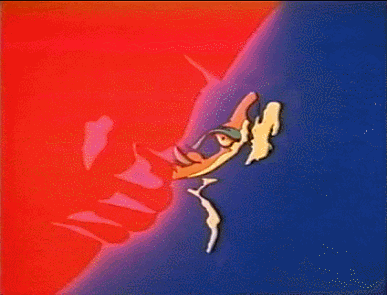originally posted at https://canmom.tumblr.com/post/702477...
Hi everyone! Welcome back to Animation Night.
Tonight we’re coming back to Rintaro, or りんたろう (or Shigeyuki Hayashi, but the pseudonym is near universal). This time I even found a picture of him!

Rintaro one of the oldest of the anime old school to still be alive. He joined the anime industry as an inbetweener on Toei’s landmark film The Legend of the White Snake in 1958 and Astro Boy - but in his own right, he’s also a co-founder of Madhouse alongside people like Osamu Dezaki (Animation Night 95), Yoshiaki Kawajiri (25, 67) and Masao Maruyama (later, founder of MAPPA). He directed such classics as Space Captain Harlock (1978) and Galaxy Express 999 (AN62), he helped create the network of connections that led to Akira, he did a chapter of Tezuka’s Phoenix (AN80) he was still going strong in the 2000s with Metropolis (53).
He is, in short, one of the most significant directors in anime. And yet, to actually find out much about him beyond the films he’s made and the places he’s worked is surprisingly hard. Even in interview, his answers are a little vague. But then, the anime and manga industry are full of reclusive, shy creators. So let’s look at the films…
…or rather, let’s look at the OVAs! Look at them with our mouth eyes.

Pop.
Rintaro spent the late 70s and early 80s working not at Madhouse but at Toei, which was a chance for him to spread his wings outside of the shadow of Dezaki. This was the Captain Harlock era, and the Galaxy Express 999 era, the latter’s remarkable film building the important connection with Yoshinori Kanada and his ‘liquid fire’ effects.
In 82, after adapting renowned satirical novel I Am A Cat for a TV special, Rintaro came back to Madhouse - around the time of Dezaki’s Space Adventure Cobra. There, he would direct Genma Taisen (Harmageddon), which can in many ways be called the prototype for Akira, setting up the power trio of Otomo, Koji Morimoto and Takashi Nakamura. I’ll be screening that for Animation Night before too long, so more on that then (or just read Watzky’s article!).
As Dezaki stepped back, Madhouse entered the era that made it famous, what we could call the ‘auteur era’. Riding the OVA boom, they animated dozens of sci-fi films, OVAs and TV shows by a variety of directors. Their style tended to emphasise static detail with bursts of complex animation; chiaroscuro night settings with bright lights driven by background animation. Rintaro was one of their stars.

So this evening we’re going to pick out two of his works from this period in the new OVA format…
Let’s start with Bride of Demos (悪魔の花嫁).
Brid of Deimos was an interesting beast: a shōjo horror manga by writer Etsuko Ikeda and illustrator Yuuho Ashibe with a a very classic-shōjo, Year 24 Group-esque visual style. (Beyond ‘authors of this manga’, it seems almost impossible to find out anything about either.) If I’m reading the plot summary right, revolves around a high school girl called Minako, who is the reincarnation of a demon Venus, the twin sister of an incestuous demon named Deimos; she is reincarnating because was executed by the demons for her incest crimes but the original soul seems to be out there somewhere? Deimos wants to bring Minako back to the underworld so Venus can possess her body again; Minako would prefer not to, and she’s got a lot of jealous people and suitors to fend off in the meantime thanks.

The manga ran a solid 26 years, from 1974 all the way to 1990. Rintaro could obviously not adapt something of that scope, and his 1988 OVA excerpts just one chapter from the whole epic for a half-hour OVA. It revolves around a brother-sister pair, the brother raising orchids and taking care of a disabled sister, who are both very yandere over each other. Into this whole mess stumbles Minako.
So expect a lot of very gothic imagery; it’s worth noting that Madhouse had adapted Vampire Hunter D just a few years earlier, and I think you can see the influence in its character design. There’s at least one very elaborate sequence of background animation which you can see above; unfortunately sakugabooru do not seem to know who animated it.
And then, just a few years later, we have Teito Monogatari (帝都物語), known in English as Doomed Megalopolis.

The original Teito Monogatari (1983-7) was a sprawling historical epic serial novel crossing basically the entire 90s, following the occult works of an immortal warlord of the Taira clan who led a failed rebellion against the central government (the same Taira clan whose fall is chronicled in the Heike Monogatari, c.f. Animation Night 91) and has now become a ghost serving the same empire. In the present, he is succeeded by Yasunori Katō, a former soldier in the imperial Japanese army who is in fact a vengeful oni working for 90 years to bring about the downfall of the Japanese Empire, bringing him into conflict with a long list of historical figures…
His ruinous ambitions bring him into conflict with some of 20th century Japan’s greatest minds including industrialist Eiichi Shibusawa, onmyoji Abe no Seimei’s descendant Yasumasa Hirai, authors Koda Rohan and Izumi Kyoka; physicist Torahiko Terada, and author Yukio Mishima. The resulting conflict, involving science, magic and politics; spans 90 years of Japan’s history.
The story begins near the end of the Meiji period and ranges through the rest of the century. It reinvents major events such as the Great Kantō earthquake [in the story, the work of Katō and his allies], the founding of Japan’s first subway, the February 26 Incident, the firebombing raids, the signing of the 1960 US Security Pact, and the ritual suicide of Yukio Mishima. The narrative finally reaches its climax in 1998, the 73rd year of a fictional Shōwa period.
The overall structure of the narrative seems to be that Katō comes up with various dastardly plans to destroy Tokyo, and is stopped by these historical figures (and original characters), deferring the destruction of Tokyo to later and later dates. In that regard it seems to fit the onryō mode, where the monster really is a victim of something terrible but nevertheless needs to be stopped. How that reflects on the subject of nationalism it raises so centrally, I’m not sure, and I’m curious to find out! e.g. it’s curious to me that it’s the villain Kato, despite fighting on behalf of indigenous people crushed by Japan, who dresses in the sinister, Nazi-like uniform of an Imperial Japanese Army officer.
This story proved wildly popular, and caused a resurgence of interest in mysticism, such as onmyōdō and feng shui, as well as the classic figure of the oni. It inspired numerous adaptations (one by Takashi Miike!) and subsequent works in the same vein in literature and manga.

By the time Rintaro got to it, there had already been one successful tokusatsu adaptation of the first four chapters in 1988 by Toho, which had received wide acclaim. There had also been a certain OVA called Urotsukidōji, discussed back on Animation Night 69, which proved that sex and violence were very in - and as a result, this OVA went a lot harder than earlier Rintaro works or indeed previous adaptations of Teito Monogatari. Hoping to distinguish his take from previous adaptations, Rintaro emphasised the supernatural aspects - the things it was possible to display with elaborate effects animation. And thus animators like Tatsuyuki Tanaka provided suitably gruesome imagery.
The series spans four episodes, each about forty minutes, all overseen by Rintaro but directed respecitively Kazuyoshi Katayama, Koichi Chigira, Kazunari Kume and Masashi Ikeda. Like Toho’s take, it focuses on the first four chapters, spanning the period 1912-1928, in which the Meiji government was rapidly industrialising Japan and transforming it into a colonial power to stand against the Europeans; not long before the story starts, Japan had annexed Korea in 1910. Beyond his earthquake shenanigans, Katō schemes to possess a girl called Yukari Tatsumiya and her daughter Yukiko. A full-on wizard war ensues.
And I think that’s enough time writing. So, if you will join me tonight, we’ll be watching Bride of Deimos followed by all four episodes of Teito Monogatari (Doomed Megalopolis)! Starting shortly on twitch.tv/canmom - hope to see you there!
Comments